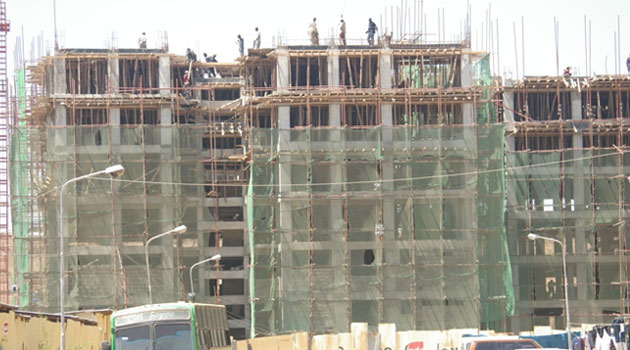
Analysts say 200,000 houses per year is an ambitious target even with new incentives by the government. Photo/XINHUA
NAIROBI, Kenya, Jan 29 – Recently, Transport and Housing Cabinet Secretary James Macharia gave a passionate promise of the government’s intent to deliver 1 million houses in the next five years.
Providing affordable housing is part of President Uhuru Kenyatta’s Big Four pledge which also includes food security, a focus on improving the manufacturing sector and affordable health care for all.
Kenyatta has promised to provide 800,000 affordable houses and 200,000 social houses for sale in five years.
The commitment means the government will either build or facilitate construction of 200,000 houses per year.
“The production of housing units is currently at less than 50,000 units annually, well below the target number, culminating in a housing deficit of over 2 million units. Nearly 61 percent of urban households live in slums,” says World Bank’s Kenya Economic Update report titled, Unavailable and Unaffordable.
Macharia, however, assures Kenyans that the feat will be achieved through government’s collaboration with the private sector where the state builds roads, provides power and water while private sector players build the houses.
“We are going to use innovative methods to conduct the project, which includes using NSSF’s balance sheet and off-plan sales through regulated escrow accounts. We have also shortlisted 35 companies to do the construction.”
Analysts, however, say 200,000 houses per year is an ambitious target even with new incentives by the government.
“I think it is a tall order. I am not disputing the possibility of building those number of houses, but this the government we are talking about. They may need to take longer to achieve these kinds of numbers,” Elizabeth Nkukuu, Chief Investment Officer at Cytonn Investments said.
Optiven Limited CEO George Wachiuri is of the opinion that the government will indeed meet the target if it adopts alternative building technologies and building materials.
“If the government also gives tax waivers, the feat is possible. For instance, it could offer 10 percent corporate tax for developers putting up 100 plus units,” Wachiuri added.
The experts, however, warn that the project will not be without challenges.
Wachiuri says that the cost of land and bureaucracy could be present major issues, while Nkukuu says decision making could take too long, making the goal unachievable.
Even with the good intentions of the government, deep and radical land reforms need to happen to facilitate the mass construction of houses.
Vision 2030 Director of Social and Political pillar Ada Mwangola says that slow processes in land registries, non-availability of land for solid waste management and delay on the execution of MoUs and land disputes in dealing with county governments are challenges the sector is already facing.
“We have a Vision 2030 goal of producing 200,000 units a year which we are yet to achieve,” Mwangola added.
But Macharia has assured Kenyans that appropriate steps have been put into place, which will make the goal achievable.
“As government, we are calling upon all partners and more so the county governments to proactively engage in the delivery of the one million houses through creating land banks, innovative financing strategies and use of efficient technologies and building materials,” Macharia told stakeholders during a national urban forum workshop.
Once the houses are complete, government promises to offer affordable home buyer financing methods to lure customers.
These include offering credit services and incorporating the Kenya Mortgage Refinancing Company to assist Kenyans to acquire the houses.







































